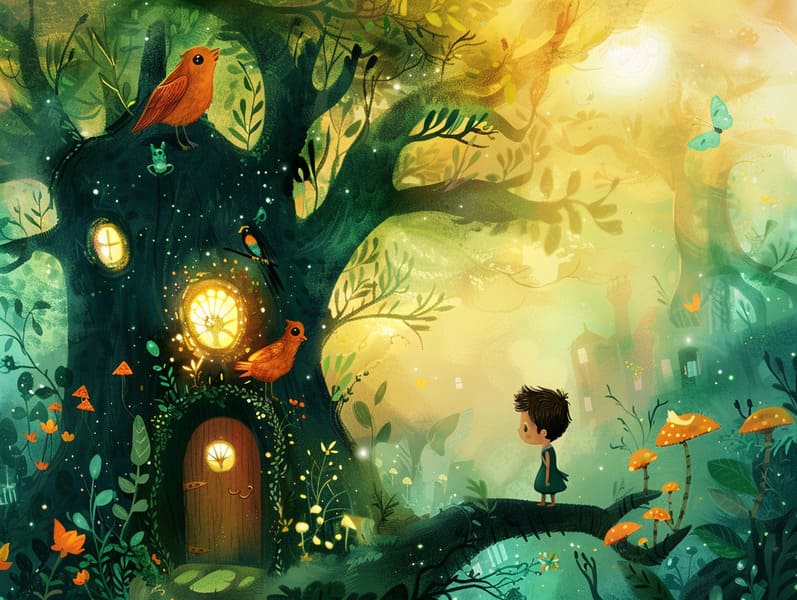The Start of Old Fairy Tales with Their Persistent Allure.
The Start of Old Fairy Tales with Their Persistent Allure.
Blog Article

Vintage fairy tales have old origins. These tales have been conveyed from one generation to the next millennia before they were ever written down. They came from a variety of backgrounds, including Western traditions. They were initially passed along among adults, often carrying themes and messages reflective of the societal norms and beliefs of the time.
Jacob and Wilhelm Grimm, Jacob and Wilhelm Grimm, were among the first to gather and publish many of these beloved fairy tales. Their published works, "Grimm's Fairy Stories," included stories like "The True Bride," "Hansel and Grethel," and "Snow-White and Rose-Red," which have since become hallmarks in the world of beloved fairy tales. Similarly, Hans Andersen's whimsical tales, such as "The Sea Maid," and "The Story of the Ugly Duckling," have touched hearts worldwide, establishing their place in the pantheon of classic fairy tales.
Even though they are old, traditional fairy tales remain as impactful as ever, especially as children's night stories. These whimsical stories are now available in diverse formats, including colorful picture books, enchanting animations, and online storybooks.
Their continued relevance can be ascribed to several whimsical characteristics:
Significant Morals: Timeless fairy tales often illustrate important moral lessons. Fairy tales like "The Tale of the Boy Who Cried Wolf" teach the virtue of honesty, while "The Tale of the Tortoise and the Hare" emphasize the merits of persistence and unassuming nature. These stories offer children clear distinctions between truth and falsehood, building their moral compass in a gentle yet significant way.
Empathy and Understanding: Timeless fairy tales frequently involve heroes facing struggles and tests, urging children to understand with their struggles and root for their triumphs. For instance, "Beauty and Her Beast" highlights the value of appreciating inner worth to perceive the true nature of a soul, cultivating awareness and insight.
Cultural Knowledge: Many fairy tales are saturated in the cultural contexts from which they sprang. Understanding these stories can provide informative snapshots into different historical contexts, enhancing a sense of cultural appreciation and awareness.
Fantasy and Imagination: The enchanted elements in traditional fairy tales—supernatural elements—foster children’s creative dreams. These tales lead readers to mythical realms, firing up inventive thinking and a sense of astonishment that persists a lifetime.
Classic fairy tales are not only bewitching but also educational. They act as charming tools in building various thinking and feeling skills in young ones. When classic fairy tales are voiced, they nurture language proficiency by showing new word meanings and complicated sentence structures. This practice also cultivates hearing abilities and attention, as the young listen intently, expectant to see what happens next.
Furthermore, debating the themes and characters of traditional fairy tales can nurture thinking skills and analytical skills. Young readers are taught to discover patterns, foresee events, and get cause and effect. These debates also support the young articulate their thoughts and feelings, enhancing their emotional intelligence.
In today’s online age, the abundance of web-based fairy tales has made these stories more obtainable than ever. Internet sites and programs provide ample collections of Grimm's fairy tales that can be browsed or listened to anytime, anywhere. Fairy tales voiced are particularly liked, providing an charming way for kids to engage with these whimsical stories. Audiobooks and read-to-me stories move characters and settings to life, often enhanced by magical melodies and songs that enrich the tale-telling adventure.
The timeless charm of these guys traditional fairy tales lies in their ability to alter to changing times while keeping their central values. Contemporary reinterpretations of these stories often spotlight more inclusive characters and modern settings, making them accessible to today’s audience. However, the key lessons of daring, generosity, and righteousness remain unchanged, continuing to appeal to young listeners of all ages.
Traditional fairy tales also offer a sense of protection and knownness. They distribute a well-arranged narrative with a obvious beginning, middle, and end, often wrapping up with the closure of conflicts and the triumph of morality over immorality. This predictability can be comforting for young ones, furnishing a sense of reliability in an dynamic world.
Timeless fairy tales continue to allure and educate new generations, maintaining their fascination and pertinence in modern society. As children's bedtime stories, they impart upon a perfect blend of delight and instruction, sustaining moral values, empathy, and creativity. The availability of online storybooks and the likability of fairy tales voiced secure that these traditional fairy tales remain attainable to new generations.
By sustaining and relating these tales, we continue to honor the rich tapestry of cultural heritage and cultural heritage. Whether you are viewing a richly illustrated book, seeing a electronic library, or hearing an narrated book, the beauty of popular fairy tales is always within reach. These stories remind us of the enduring strength of storytelling and its ability to gather us across centuries and lands.
Even if you are seeing a vibrantly illustrated book, delving into a electronic collection, or listening via an read-aloud book, the grace of famous fairy tales is always within reach.
These narratives highlight of the unending impact of narratives and its ability to unite us across eras and regions, establishing a link that enchants and educates alike.